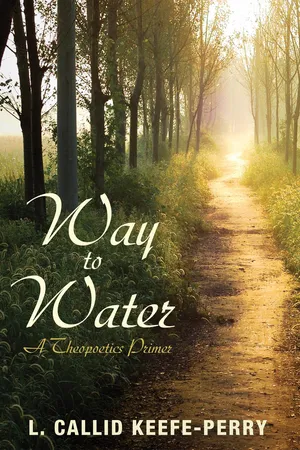![]()
part one
Early Articulations
![]()
1
Orbits and the Ineffable
An Investigation of Stanley Hopper
The primary calling of the theologian is to name God, and to name that God who can actually be named by us.
—Thomas J. J. Altizer
While the first published mention of “theopoetics” as such is in Stanley Hopper’s 1971 American Academy of Religion address “The Literary Imagination and the Doing of Theology,” the phrase did not spring forth from nothing. Given this, prior to exploring Hopper’s explicit reference to the word, and so as to contextualize the environment in which Hopper was writing, I will address three circles of dialogue in which Hopper was a participant, tracing his thought as a trajectory around these significant pulls: The Society for the Arts, Religion, and Contemporary Culture; Drew University’s Consultations on Hermeneutics; and The Radical Theology movement. Once these orbits have been traced, I will follow Hopper’s path as influenced by these conversations, concluding with perspectives from his own writing in which theopoetics is either discussed explicitly or alluded to by means of suggested method.
Three Circles
The Society for the Arts, Religion and Contemporary Culture (SARCC), was founded in late 1961 by three men: Alfred Barr Jr., the art critic and founder of the Museum of Modern Art, and the theologians Paul Tillich and Marvin Halverson. Its first board of directors included these three as well as Unitarian Universalist theologian and parish minister James Luther Adams; mythologist Joseph Campbell; principle developer of the merger forming the United Church of Christ, Truman B. Douglass; Congregationalist parish minister and theologian, Amos Wilder; and Stanley Hopper. It was a predominantly left-leaning organization, with aims “based on the deep and complex relationship between religion and the arts.” SARCC board members and fellows were engaged in a variety of professions, spanning from theology to law, with poets, architects, clergy, therapists, and violinists in the midst as well.
Throughout the 1960s, SARCC sponsored numerous gatherings focused around the intersection of faith and art, with a greater emphasis being placed on the art than on any particular religion or creed. Bill Conklin, an early member of SARCC’s board, recalls that all three founders “thought that the religions of the world were noble in intentions, but were far out of touch with the current world.” As a consequence of this position, the primary thrust of the organization was not to be theological, but toward the artistic, which could more powerfully “address the Universal in contemporary society.” Indeed, although Tillich was one of the founding members, and his significant influence was already beginning to be noted, both he and fellow theologian Halverson mutually agreed that Barr ought to serve as SARCC’s first President, believing that “the artists should be in charge.”
As Hopper came to serve on SARCC’s board, they were in the midst of developing plans for SARCC centers in the major cities of the world, “devoted to their common hopes concerning the coalescing and penetrating capabilities of religious thought, of great art, and of the immense importance of human conversation.” For Hopper, this would have all been familiar and well within his areas of interest.
From 1948 to 1950 Hopper chaired the Commission on Literature at the National Council of Churches, and was the sole delegate from the United States at the First Conference on Religion and the Arts at the Ecumenical Institute in Celigny, Switzerland. In 1958, at Drew University, he founded the first graduate program in Theology and Literature in the United States. Throughout his life he had a profound personal predilection toward the arts, was a published poet himself, and was close friends with both Cleanth Brooks and T. S. Eliot. Hopper’s interest in art was paralleled by an interest in interpretation, which is exemplified by his work with Drew University’s Consultations on Hermeneutics.
According to David Miller, a student of Hopper’s, the “consultations were located intellectually at the intersection of left-wing Bultmannian Biblical interpretation, the thought of the late period of Heidegger’s existential philosophy, and the Religion and Literature movement.” As the “Religion and Literature movement” was closely associated with the work of SARCC, the following sections will clarify “the late period of Heidegger’s existential philosophy,” and “left-wing Bultmannian Biblical interpretation.”
Broadly speaking, hermeneutics is the study of interpretation, the study of how humanity makes sense out of things, most often texts. The Drew Consultations were interested in this same type of investigation, and were particularly interested in the work of Martin Heidegger, a twentieth-century German philosopher whose work in the philosophical sub-discipline of “phenomenology” is relevant to nearly all work done today in that field. At its most basic, phenomenology focuses on the study of experience, or how things are experienced by people, rather than the study of metaphysics, or the attempt to study the essential nature of things and being. Heidegger’s position, as pertains to the Consultations, is well-framed by the three questions he asked to be considered at the Third Consultation in 1966. These questions—and my explanatory commentary—are as follows.
